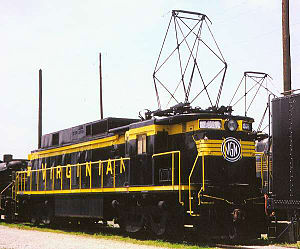1948 is mostly going to be the same as OTL, so here are some ideas I had for future updates as we start 1949 soon.
- The Santa Fe and Frisco make plans to merge at some point in the near future.
- Assuming the Burlington Northern is formed earlier than OTL, a condition is the Rio Grande gets the C&S south of Pueblo, CO.
- B&O and southern make plans to split the Monon. With the Michigan City - Louisville parts going to Southern and the Chicago - Indianapolis line going to the B&O.
- The New York Central realizes competing with air is impossible. So they instead for a partnership with Pan Am. Eventually Santa Fe also gets in on the act and joins the same partnership.
- Martin Clement, CEO of the Pennsylvania, becomes fed up with certain issues plaguing the railroad. As a solution, he further strengthens ties with the Norfolk & Western. With upgrades like CTC, modernized steam facilities, terminals were modernized, classification yards expanded. The PRR also takes up the RF&P to expand the NEC in Virginia. Which reaches Norfolk via the N&W Richmond Subdivision.
- The Rio Grande realizes the tourism potential of its narrow gauge lines. This works handsomely, and a good chunk of the profit is used to electrify the Denver - Grand Junction line.
- The Milwaukee Road gets taken over by former Southern Pacific employees. Whom bridge the gap of electrification, improved services in general, and make plans to donate steam engines to museums.
- The New York Central decides that if they're going to go straight to electrics, they may as well keep the Niagara 4-8-4s running. Luckily, this means at least #6012 and #6015 are preserved eventually.
- The Baltimore & Ohio makes plans to buy up the Reading and Jersey Central. Complete with plans to save some of the two railroad's equipment for the planned B&O Museum.
- The Santa Fe and Frisco make plans to merge at some point in the near future.
- Assuming the Burlington Northern is formed earlier than OTL, a condition is the Rio Grande gets the C&S south of Pueblo, CO.
- B&O and southern make plans to split the Monon. With the Michigan City - Louisville parts going to Southern and the Chicago - Indianapolis line going to the B&O.
- The New York Central realizes competing with air is impossible. So they instead for a partnership with Pan Am. Eventually Santa Fe also gets in on the act and joins the same partnership.
- Martin Clement, CEO of the Pennsylvania, becomes fed up with certain issues plaguing the railroad. As a solution, he further strengthens ties with the Norfolk & Western. With upgrades like CTC, modernized steam facilities, terminals were modernized, classification yards expanded. The PRR also takes up the RF&P to expand the NEC in Virginia. Which reaches Norfolk via the N&W Richmond Subdivision.
- The Rio Grande realizes the tourism potential of its narrow gauge lines. This works handsomely, and a good chunk of the profit is used to electrify the Denver - Grand Junction line.
- The Milwaukee Road gets taken over by former Southern Pacific employees. Whom bridge the gap of electrification, improved services in general, and make plans to donate steam engines to museums.
- The New York Central decides that if they're going to go straight to electrics, they may as well keep the Niagara 4-8-4s running. Luckily, this means at least #6012 and #6015 are preserved eventually.
- The Baltimore & Ohio makes plans to buy up the Reading and Jersey Central. Complete with plans to save some of the two railroad's equipment for the planned B&O Museum.



